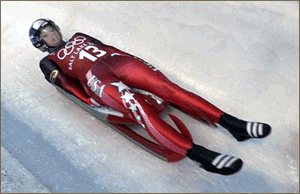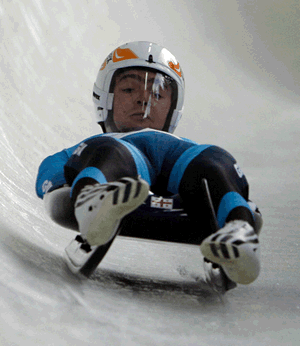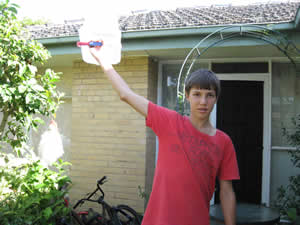Friction is the force that acts to stop two objects moving over one another, when in contact with each other. The greater the surface area in contact with both surfaces the greater the frictional forces that act. Rough surfaces usually have a greater surface area exposing more molecules to direct contact with the molecules of the other surface.
The athletes take an aerodynamic position on the sled that minimises the force of drag.
The luge is a high speed event that generates incredible forces that act on the athlete.

The low friction enables the athlete to accelerate down the slope under the influence of gravity. Minimal surface area is in contact with the ice and this reduces friction.

When the athletes speed around a curved path they experience a force against the ice that can sometimes be as high as 8 times that of gravity.
This is often attributed to a force called the centrifugal-force. This is a reaction of the ice on the athlete and its effect is attributed to inertia - the tendency of a moving object to follow a straight path.
But try telling that to the athlete who feels this crushing effect on his body.

The centrifugal-force effect can be demonstrated by rotating a bucket of water above your head, as shown on the right. Here the water inside the bucket wants to move in a straight path, but the bucket falls faster than the water so the water stays in the bucket.
The trick is to rotate fast enough to keep the water in.
